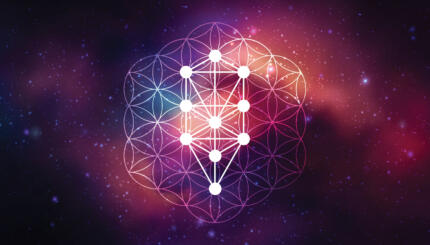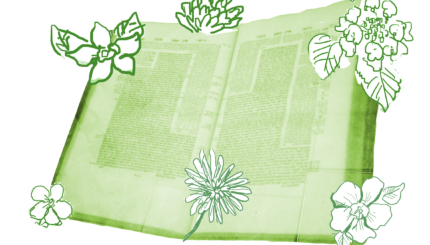As a child, I thought all feminists were Jewish women. (I also thought all Jewish women were feminists, but that’s another story.) From an early age, I learned from my feminist mother about Betty Friedan, Bella Abzug, Shulamith Firestone, and other Jewish women who put their hutzpah to work for the feminist revolution. From this perspective, I assumed that the historical feminists I learned about from books and at school–women such as Susan B. Anthony, Lucy Stone, and Alice Paul–must also be Jewish. After all, they were gutsy, loud, and determined, and they changed the world from their position at its margins.
A Prominent Presence
As a student of women’s history in college and graduate school, I came to see the limitations of my childhood perspective, and my own feminist vision was immeasurably broadened by exposure to the work of non-Jewish feminists such as Kate Millet and Audre Lorde. And yet, my youthful assumption that there was something Jewish about feminism seemed to be validated by the disproportionate representation of Jewish women among the pioneers and leaders of the modern American women’s movement.
It’s almost overwhelming to consider the numerous Jewish women who have shaped every aspect of the women’s movement and of American life: from Betty Friedan, who sparked Second Wave feminism (the resurgence of feminist activism beginning in the 1960s) with the 1963 publication of The Feminine Mystique and the founding of the National Organization for Women (NOW) in 1966, to Judy Chicago, who created art centered on women’s experiences in The Dinner Party; from Alix Kates Shulman and Anne Roiphe, who published the first novels of the women’s liberation movement, to Andrea Dworkin and Susan Brownmiller, who protested pornography and violence against women; from Robin Morgan and Shulamith Firestone, who organized women’s "consciousness-raising" groups and published early feminist theory, to Barbara Seaman and Alice Wolfson, who protested the dangers of the birth control pill in Senate hearings in 1970; from Gloria Steinem and Letty Cottin Pogrebin who founded Ms. magazine, to Carol Gilligan and Phyllis Chesler, who exposed gender bias in psychology; from Bella Abzug, who brought feminist politics to Congress, to Gerda Lerner, who created and institutionalized the field of women’s history. The list goes on and on.
How to explain the prominent presence and shaping influence of Jewish women in the feminist movement? As co-curator of the Jewish Women’s Archive new online exhibit on "Jewish Women and the Feminist Revolution," I had the opportunity to survey the impressive role of Jewish women at the forefront of Second Wave feminism and to speak with many leading feminists about their experiences as Jewish women and as activists in the women’s movement. My research for the exhibit and the stories and artifacts contained within it suggested some of the reasons for this powerful connection.
Feminist Awakenings
Jewish women who became feminist leaders generally trace their feminist awakening to two contrasting experiences of Judaism. Many speak of the positive influence: the Jewish tradition of social justice. As Letty Cottin Pogrebin has explained about her own roots: "I grew up in a home where advancing social justice was as integral to Judaism as lighting Shabbat candles… Having learned from [my parents] to stand up for my dignity as a Jew, I suppose it was natural for me to stand up for my dignity as a woman, which, after all, is what feminism is all about." In this association of Jewishness and progressiveness, feminism becomes an expression of Jewish values.
But Pogrebin’s feminism also grew out of a negative Jewish experience–that of being excluded from the minyan (prayer quorum, traditionally composed of ten men) at her mother’s death. She is not alone. Identifying early moments of exclusion from Jewish practice or community on the basis of sex–not being allowed to say kaddish (mourner’s prayer) for a parent or get a Jewish education are just two examples–many women embraced feminism as a reaction against patriarchal Jewish values and as an alternative to a model of community based on traditional gender roles.
The status of American Jewish assimilation in the postwar period also contributed to the role of Jewish women in the resurgence of feminism. While Jews were new enough to America that they still identified as outsiders, assimilation was sufficiently underway that Jewish women were able to identify with others (such as non-Jewish women) beyond the boundaries of their community. By contrast, many African-American women in the 1960s identified predominantly with African-American men and were less willing or able to make common cause with other women across race lines. Generally upwardly-mobile, Jewish women in this period also tended to be well educated and endowed with a sense of entitlement that, alongside their sensitivity to injustice, helped fuel their feminist activism. They believed both in the necessity of social change and in their own ability to bring it about, and through their involvement in other social justice activities (such as the civil rights movement) they gained concrete organizing skills that served them well in building the women’s movement.
The shadow of the Holocaust and the long history of anti-Semitic violence often highlighted in Hebrew schools shaped the paths of many feminists coming of age in the 1940s and 1950s, such as Heather Booth–founder of the first campus women’s movement organization and of the underground abortion service, JANE–and Susan Brownmiller–who fought violence against women. Booth traces her lifetime of activism to a 1963 visit to Yad Vashem, where she took a personal oath: "I promised myself that in the face of injustice I would struggle for justice." Brownmiller, though turned off from Judaism by an early experience of sexism, admits that "I have never stressed my Jewish heritage in my writing. Yet the heritage is still with me, and I can argue that my chosen path–to fight against physical harm, specifically the terror of violence against women–had its origins in what I had learned in Hebrew School about the pogroms and the Holocaust."
The otherness that many Jewish women felt as Jews in postwar America dovetailed with their experiences of otherness as women. Though often painful, the parallelism of these experiences bolstered their determination to fight for inclusion and equality. Poet Adrienne Rich explores these parallels in her 1985 essay "If Not with Others, How?":
"We have been ‘the Jewish question’ or ‘the woman question’ at the margins of Leftist politics, while Right Wing repressions have always zeroed in on us. We have–women and Jews–been the targets of biological determinism and persistent physical violence. We have been stereotyped both viciously and sentimentally by others and have often taken these stereotypes into ourselves…We exist everywhere under laws we did not make; speaking a multitude of languages; excluded by law and custom from certain spaces, functions, resources associated with power; often accused of wielding too much power, of wielding dark and devious powers."
Rich argues that these parallels of otherness and discrimination should serve as a basis for empathy and for political coalition, and for many Jewish women they have.
Jewish women did not only experience otherness in negative terms. The resurgence of ethnic pride in the wake of Black Power gave many a sense of satisfaction in their distinctiveness as Jews. Ethnic pride could also combine with and reinforce feminist pride. When Jewish women rejected the postwar definition of beauty and femininity limited to non-Jewish looks, for example, they challenged both ethnic and gender norms and fused Jewish and feminist consciousness.
Whether Judaism served as a positive or negative encouragement to feminism–and for many, undoubtedly, it was both–the Second Wave feminist organizing methods and understanding of politics brought family and community experiences under close scrutiny. The central feminist tool was "consciousness-raising," a method of conversation and self-examination based on the ideology that "the personal is political"–that our personal experiences and choices are not merely individual but influenced by larger social structures and institutions that are powerful but often invisible. The first and central act of feminist activism, then, was to identify these structures and institutions so that the workings of power within and through them could be challenged and transformed. This required personal examination of family dynamics and communal expectations, and in the process, the ethnic particularities of family and community became essential to feminist development.
What legacy do we inherit from these Jewish feminist pioneers? A changed world, to be sure, and continuing battles to be fought. But we also learn about the complex intersection of otherness and integration, suffering and entitlement, social justice and patriarchy in the Jewish experience, and its power to make us effective agents of social change.
Shabbat
Pronounced: shuh-BAHT or shah-BAHT, Origin: Hebrew, the Sabbath, from sundown Friday to sundown Saturday.


